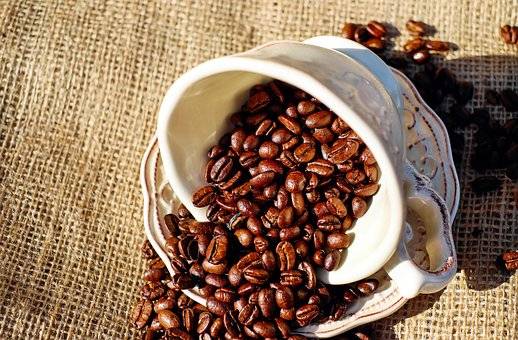Coffee history dates back long ago, with a goat herder discovering the same in Ethiopia. Today’s world knows the taste and usefulness of real coffee. The youth is up for flavors like a Coke coffee drink, scented caffeine preparation, and other coffee-based products that are good to taste. Most importantly, we have an entire US nation where almost 53% of adults have a coffee addiction.

However, the game was all different, and once upon a time, coffee was termed as a devil’s drink, offering superpowers to humans. So let’s find out the odds that barred the modern-day pick-me-up drink from getting introduced to the public in the ancient age. Also, you can go through the list of facts involved.
The World Just Got Caffeinated – A Study From 1400 To 1800
It was not until Pope Clement VIII blessed coffee that the drink was allowed to be used by the general public. So what was the take of the pope on the same? According to him, the devil’s drink tastes awesome, and one can surely baptize coffee, cheating on the devil himself. However, this incident justifies the European side of the story and that also at a later age. But let’s look into the emerging days of coffee as a drink for the commons.

Under several events, this magnificent drink became the statement piece in itself. For several decades, it served as a commodity of connection between traders besides humans and Gods. Early in the modern period, it was a point of interaction between Europe and the Middle East. The traders were mostly Muslim or European merchants. With time the drink started making its place in the lives of the colonials and the enslaved. Now the consumers began looking at the same as a drink which helped them break all ties with sleep and tiredness. Thus paving the way toward industrialization.
As per historical evidence, coffee was used before the 1500s as a small-scale trade between Ethiopia and Yemen.
Key Takeaways – Coffee History
- Back in the 9th century, shepherds from Yemen noticed their sheep getting energetic after having the beans of the coffee plants.
The religious societies of the Sufi culture reported the first documented use of coffee. - It took the next few centuries for coffee to spread across the Islamic world and make it to Europe in the 1500s.
- Coffee was considered a political threat to society. And the noblemen wanted the pope to ban the drink after they were not satisfied by calling it “the devil’s drink.”
- If caught red-handed while purchasing or having coffee, people had to pay by giving up on their lives.
- With the opening of trade routes in 17th-century Europe, coffee became popular. Even though people were punished for having coffee, the drink became popular among the commoners.
Coffee History In The Twentieth Century
Moving on into the twentieth century, coffee was quite established by now. However, the price of the same was in a situation of turmoil. The Valorization technique introduced by Brazil in 1906 made the prices rise to a different level. As per the scheme, the world could not access a part of the proportion. The consuming nations rose to protest, and by 1913, it was Latin America, producing 91% of the total coffee consumed throughout the globe.

World War 2 bought some changes in the coffee culture.
- At first, soldiers got addicted to coffee. Thus paving the way for cheap coffee supplies. Now regions producing robusta coffee did have the opportunity to enter the market.
- Second, there was an end to the rule of imperial power over coffee.
- Third, there was an enhancement of limited consensus between the consumers and producers of coffee.
Moving on, we have the cold war and the signing of the International Coffee Agreement in 1962.
- Then, in 1989, the Berlin Wall’s demolition and the USA’s moving out of the ICA after some time were turning points. Coffee prices came down, a symbol of change in the post-Cold War era.
- The coffee producers in Vietnam did receive huge grants from the IMF (International Monetary Fund). And to repay the loan, they started selling their coffee products to the outside world at a low price, marking the onset of sustainable models of coffee production.
20+ Interesting Facts About Coffee History
- A goat herder in Ethiopia back in 1500 discovered coffee.
- The name coffee dates back to 1582. Before that, it was known as “qahwah,” or a type of wine in Arabic, and “Kahve” by the Ottoman Turks. Later the Dutch named the same as “koffie,” and we got equipped with the word “coffee.”
- Over the years, people tried to ban coffee as the rulers feared it would unite the opposition against them.
- In Arab culture, especially in Saudi Arabia, women can file a divorce against their husbands if the latter fails to arrange for fresh coffee (in the morning).
- Coffee beans are not real beans. Instead, they are the seed within the coffee cherry.
- Given the right conditions, you can plant a coffee bean, which will grow into a full plant.
- The valorization scheme by Brazil in 1906 was a major turnover in coffee history.
- The signing of the coffee agreement internationally in 1962 made the world accustomed to the coffee culture and an organized supply and demand.
- With its origin in Indonesia, Kopi Luwak is the most expensive and fancy coffee drink in the world, among many. The price of the same rises to £400 a kilogram.
- The largest cup of coffee was 22,739.14 liters as of the 15th of June 2019.
- Hawaii is the only state in the US with favorable conditions to produce coffee.
- The warmth of coffee grows by 20 percent when you add ice cream.
- Americans spend $20 per week on their coffee. This ranges up to $1092 every year.
- Brazil is the largest coffee producer.
- There are two types of coffee, Arabica coffee and Robusta coffee.
More On Coffee History
- As per reports by the International Association of Coffee, Europe imports more coffee than the USA.
- Also, according to research, the people in Finland consume the most coffee, which ranges up to 27.5 pounds yearly. At the same time, the number is 11 pounds for a regular America.
- According to the Harvard Association of Health Publishing, 3 to 4 cups of coffee daily will give you a longer life and lower chances of cardiovascular diseases.
- 30 cups of coffee within a short period can overdose on you.
- You can use leftover coffee beans as a natural exfoliator and eliminate dead skin cells quickly.
- The world’s oldest cat (38) drank coffee daily. Her name was Creme Puff.
- Under the influence of coffee, your kidneys will flush out excess water and sodium from your body over urine, causing dehydration.
- Before coffee became popular in the US, adults and children used to have beer or cider.
- The name “Cappuccino” comes from the piece of cloth worn by the Capuchin monks.
- Starbucks is an irreplaceable name in the coffee world, with around 87,000+ coffee drinks for the public to taste. Starbucks’ frappuccino chilled coffee drink is one of the notable drinks for coffee lovers to taste.
So that is all, a complete take on the journey of coffee. Check out “World War 2 And Marriage” and “Advertisements – Over The Years” for a comprehensive overview of different time frames.



